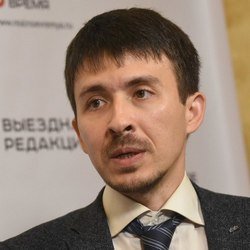5G in Tatarstan: eight test sites, costs worth millions for businesses and global frequency problems
5G networks are going to be tested in five Tatarstan cities
It became known in late June that Tatarstan chose eight sites to test 5G networks. Realnoe Vremya found out what companies became interested in the Tatarstan sites, how much the 5G network test would cost, the goal of launching such sites across the country and what impeded from launching the 5G technology in Russia.
“There are no formal restrictions for businesses in terms of their size to participate in the testing”
Five cities of Tatarstan will have a chance to organise pilot zones to launch 5G networks. According to the decision of the State Commission for Radio Frequencies (SCRF), the list of settlements includes Kazan (Yamashev Street, Vakhitov and Novo-Savinovsky Districts as well as Kazan Airport), Naberezhnye Chelny (KAMAZ factory), Innopolis, Almetyevsk and Arsk.
As Realnoe Vremya was said in the Russian Ministry of Digital Development, Communications and Mass Media of the Russian Federation, the territories were chosen in accordance with operators’ requests, while the format of every test zone will depend on the case. The final decision on the test sites and operators will be made at the next meeting of the SCRF in July, while the mass media at the moment have preliminary information that MTS, Vympelkom (Beeline) and Tattelecom have already applied for the organisation of 5G test zones in the Republic of Tatarstan.
The press service of MTS PJSC specified that the company filled in an application to organise pilot zones in Innopolis and Naberezhnye Chelny in KAMAZ factory in 2019-2020. Tattelecom didn’t manage to give a fast reply to the newspaper’s request and say which regional sites interested the company. Representatives of Beeline, in turn, limited to the information that the operator planned to launch several 5G pilot zones in Tatarstan till the end of the year.
As the Ministry of Informatisation and Mass Communications of the Republic of Tatarstan said previously, any interested organisation can apply for the 5G network test on one of the eight sites, and all local companies are aware of the opportunity. The Russian communications ministry clarifies that there are no formal restrictions for businesses in terms of their size to participate in the testing, but they “should understand that 4G substrates and the 4G and 5G network core are needed for full-fledged testing, while it is significant costs that a small company is unlikely to afford”.
“To test 5G, it is necessary to agree with force agencies on the possibility to use specific radio frequencies and sites to locate basic stations. For this purpose, an operator should go to the Main Radio Frequency Centre with an application to examine the electromagnetic compatibility. The materials obtained are sent to the SCRF to make a decision on allocation of the radio frequency for the pilot zone,” the press service of the federal ministry described the algorithm of actions. “The costs on the examination is up to 100,000 rubles for every basic station. Then it is the cost of the basic station (from 1 to 3 million rubles depending on configuration) and operational costs.
“An ordinary user won’t get any benefit from pilot zones”
Last year, a 5G test zone opened in Innopolis by Rostelecom PJSC, Tattelecom PJSC, Huawei and the Ministry of Informatisation and Mass Communications of the Republic of Tatarstan. It should be reminded that Rostelecom provided frequency, Tattelecom gave test infrastructure (optic communication channels, cable laying, masts), and Huawei provided the test zone with broadband wireless access equipment with 5G elements (Massive MIMO). The site was used by residents to test solutions and products that require 5G networks. Several pilot zones opened outside Tatarstan in Moscow and Saint Petersburg.

Director of KFU’s Higher Institute of Information Technology and Intelligent Systems Ayrat Khasyanov, in turn, adds that the faster technical aspects of the 5G launch are tested, the faster the opportunities to develop the business will be available.
“The consumer will get more reasons for laziness, almost not to leave the house and make friends with phones only. Speaking seriously, it will become easier to solve everyday problems. There will be more convenient services such as car sharing, which has recently and en masse arrived in Kazan. It is very convenient. There will be no need to buy a car in the city. And, of course, users will get a cheaper and better network after launching 5G networks. Remember how much the mobile network cost at the dawn of the appearance of GSM and CDMA and compare with its today’s price or compare how much this network costs abroad,” Ayrat Khasyanov says.
It should be noted that the allocation of frequencies is so far one of the key problems thwarting the development and implementation of 5G in Russia.
“Militaries occupy the frequencies that they seem not to need but can come in handy. And it is precisely the frequencies 5G would be faster with, and the launch wouldn’t inexpensive. Now, as far I am concerned, a more expensive option is tested, which will allow communication operators to calculate how profitable it is,” Irina Levova states.
“Strictly speaking, it is a completely different model of the economy”
Director of KFU’s Higher Institute of Information Technology and Intelligent Systems Ayrat Khasyanov explained that the 5G network isn’t only high dimension multimedia content but a better network in crowded places, a reduction in capital costs of mobile operators and, as a consequence of competition, decrease in the communication bill. According to him, the so-called Internet of Things will account for the biggest part of traffic, particularly the Industrial Internet of Things. The urban environment will become smarter every year as well as our homes.
Smart houses, factories and even smart kettles — these are the Internet of Things users. The further development of a competitive economy is forecasted to require the support of connection of at least 300,000 cyber-physical devices to a hundred, up to 1 million devices per square metre.

The director of the KFU HIITIS adds that our smartphones and urban transport generate more and more traffic. Autonomous cars, which are about to arrive, will be more “voracious”: KAMAZ together with Kazan Federal University are developing an unmanned lorry, a Yandex unmanned taxi is driving in Innopolis.
“The Internet of Things is one of the key factors of the fourth industrial revolution. Integration of related areas on production line sounds quite abstract. However, for the consumer, it means, for instance, a possibility to choose the configuration of a new car in detail while sitting at home, including a desire to have or not to have artificial intelligence in the new car. Then all necessary manufacturing processes are launched. A new car approaches the client’s home in the short run. From a perspective of the manufacturer, the production of a unit of a unique product in Industry 4.0 is slightly different from mass production. It is a completely new level of services and goods for the consumer. Strictly speaking, it is a completely different model of the economy where there can be found a niche even for a small household growing small surpluses of cucumbers and tomatoes. But such an economy is impossible without exchange of data, big, very big amount of data,” Ayrat Khasyanov concludes.